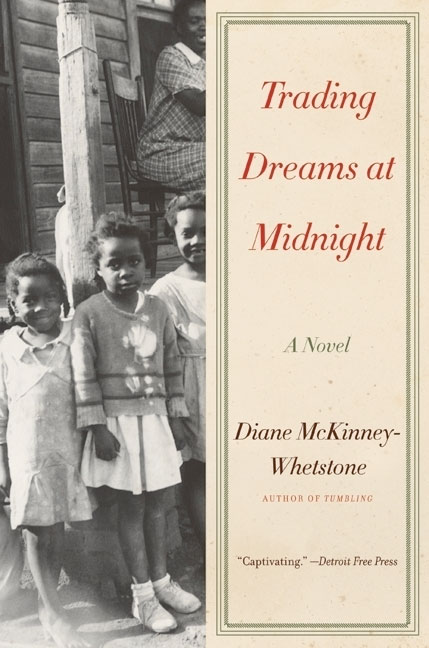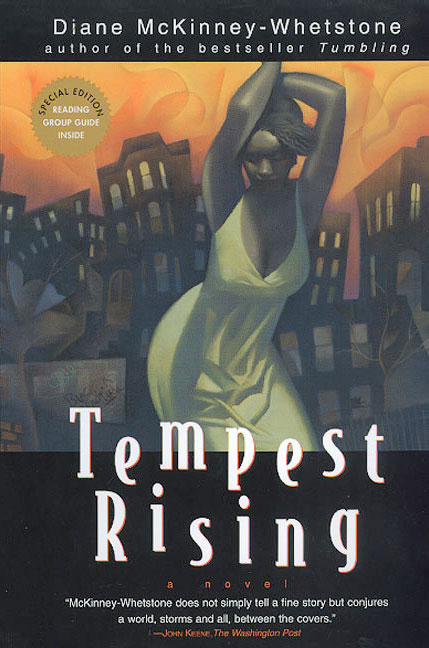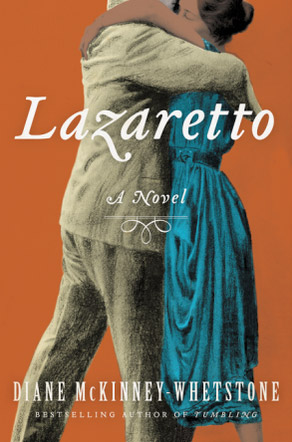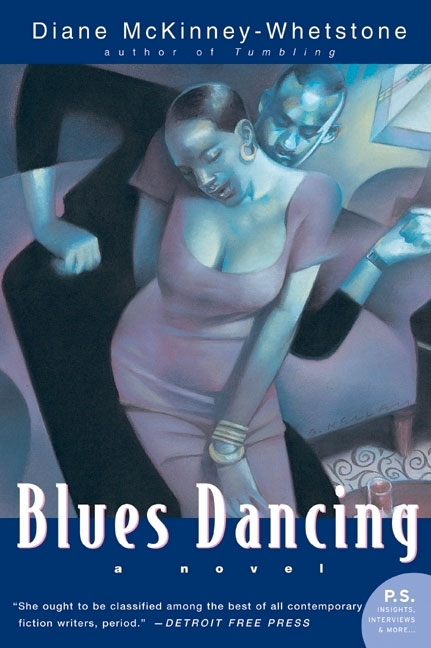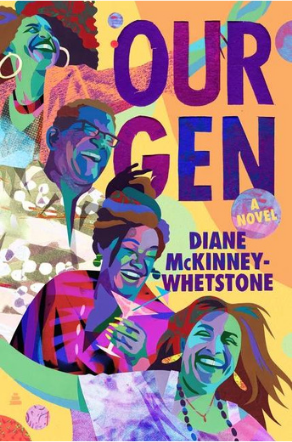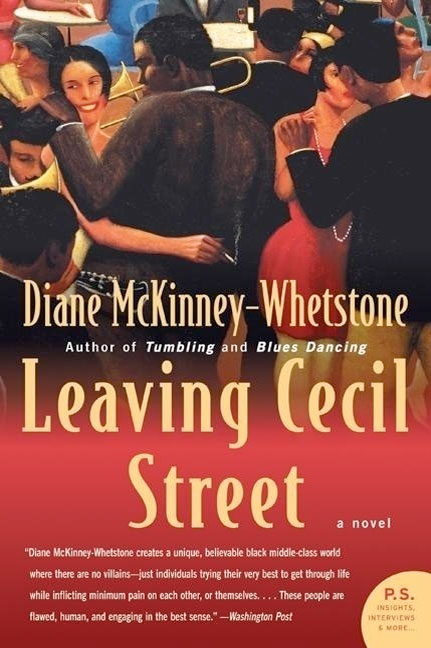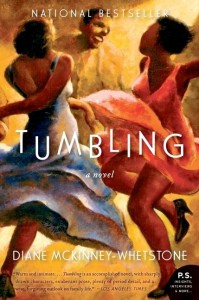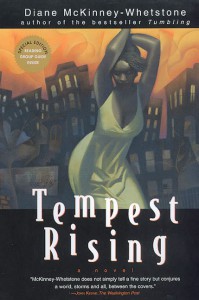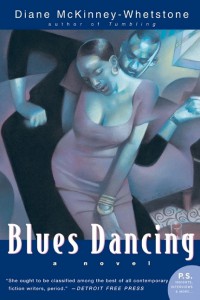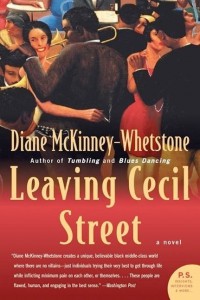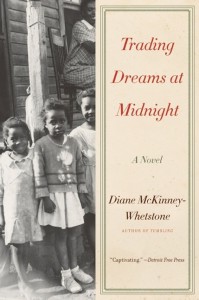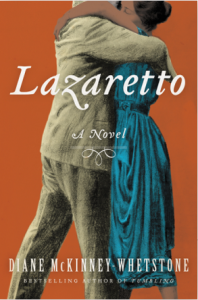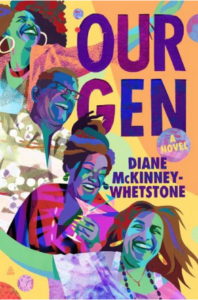Tumbling
A Wall Street Journal’s Book Club selection
Set in South Philadelphia during the 1940s and 1950s, Tumbling combines the mood of an urban community with the vitality of its inhabitants to tell a story of the ties that bind us, and the secrets that keep us apart.
Noon and Herbie are deeply in love and living in their tightly knit African American neighborhood. But their marriage remains unconsummated because of a horrible event in Noon’s past, so each seeks comfort elsewhere: Noon in the warm acceptance of the neighborhood church; Herbie in the arms of Ethel, a jazz singer. Then one day an infant girl is left on their doorstep, and later it happens again; this time a five-year-old girl is abandoned at their home. Suddenly and unexpectedly a family, Herbie, Noon, and their two girls draw closer—until an outside threat to run a highway through their community awakens a fire in Noon, causing her to rise up and fight to hold her family and her community together.
Praise for Tumbling
“Even the air is palpable in Tumbling…The story moves forth on the power of Ms. McKinney-Whetstone’s characters. Ms. McKinney-Whetstone captures the formidable struggle to protect both a community and a family.” — New York Times Book Review
“Warm and intimate…. Tumbling is an accomplished novel, with sharply drawn characters, exuberant prose, plenty of period detail and a wise, forgiving outlook on family life.” — Los Angeles Times Book Review
“A deeply textured narrative that proves as rich and fulfilling as a well-cooked meal. McKinney-Whetstone is clearly a smart, careful writer who’s created a page-turner of a novel with abundant style and irresistible charm.” – Washington Post Book World
“A beautifully written tale; a lyrical read.” – USA Today
“A remarkable first novel.” — Publishers Weekly (starred review)
“A bouncy, moody, musical debut by an author, who, like a good blues singer is strong on style and interpretation…a gifted prose writer with a tremendous sense of place.” – Kirkus Reviews
“Her [McKinney-Whetstone’s] style stands above any attempt to classify or compare.” – Philadelphia Tribune
Tempest Rising
Set in West Philadelphia in the early sixties, Tempest Rising tells the story of three sisters, Bliss, Victoria, and Shern, budding adolescents raised in a world of financial privilege among the upper-black-class. But their lives quickly unravel as their father’s lucrative catering business collapses. He disappears and is presumed dead, and their mother suffers an apparent breakdown. The girls are wrenched from their mother, and placed in foster care in a working-class neighborhood in the home of Mae, a politically connected card shark. Though Mae is filled with syrupy names like “pudding” and “doll face” for the foster girls, she is abusive to her own child, Ramona, a twenty-something stunning beauty. The girl’s presence in and subsequent disappearance from Mae’s house force Mae and Ramona to confront the brutal secret that caused their hearts to lock against each other.
Diane McKinney-Whetstone richly evokes the early 1960s in West Philadelphia in this story of loss and healing, redemption and love.
Praise for Tempest Rising
“McKinney-Whetstone’s gifts as a writer continue to fascinate.” – San Francisco Chronicle
”McKinney-Whetstone is masterful at rendering the spaces between people, giving to the air that separates them a taste, a texture, a soul.”— The Philadelphia Inquirer
“Philadelphia in 1965 comes alive in this fast-moving story of courage and determination.”— School Library Journal
Blues Dancing
This richly spun story of love, passion, betrayal, and redemption shifts seamlessly between 1990’s and 1970’s Philadelphia when Verdi, the pampered daughter of a prosperous southern preacher, enrolls at the local university. Immediately drawn to Johnson, a fellow student whose city-smart ways are as intriguing as they are shocking, Verdi spirals into an unfamiliar world of erotic love, militant politics, and heroin. Enter Rowe, the conservative professor who rescues Verdi from her addiction even as he falls hopelessly in love with her himself.
Twenty years later, as the novel opens, Verdi and Rowe’s comfortable, if unexciting, existence is rocked when Johnson returns to town-and Verdi must grapple with the memories of her old love and the assurance of her new life. Smooth as jazz, belted out with McKinney-Whetstone’s signature rhythm and intensity, Blues Dancing compellingly captures the desperate struggle to reconcile passion with accountability and the redemptive powers of love’s rediscovery.
Praise for Blues Dancing
“She [McKinney-Whetstone] ought to be classified among the best of all contemporary fiction writers, period.” – Detroit Free Press
“Diane McKinney-Whetstone uses her gift for language to weave a love story…well worth curling up with on a long winter’s night.” – Essence Magazine
“McKinney-Whetstone gives a rhapsodic performance is this story of self discovery.” – Publishers Weekly (starred review)
Leaving Cecil Street
As she did in her previous novels, Diane McKinney-Whetstone once again skillfully renders time and place, character and emotional intensities. It is 1969 and Cecil Street is “feeling some kind of way,” so the residents decide to have two block parties this year. These energetic, sensual street celebrations serve as backdrops to the stories of the people on the block. Joe, a long-ago sax player, has turned his eye across the street to a newly arrived young southern beauty even as he is suddenly haunted by memories of his horn-playing nights and his affection for a shy, soft hooker from years ago. Joe’s wife, Louise, a licensed practical nurse, is losing her teeth to gum disease and her joy to sensing that Joe’s attention has wandered. Their teenage daughter, Shay, is consumed with helping her best friend and next-door neighbor Neet, who has gotten pregnant by a Corner Boy. Neet’s mother, Alberta, is shunned by the block because of her immersion in a religion that has no name. As the novel opens, the first block party has ended and a naked woman has secretly taken up residence in Joe and Louise’s cellar. As the novel builds to the second block party, the past becomes as immediate as the present, condemnable acts become righteous, and what is tragic is also filled with hope.
Praise for Leaving Cecil Street
“Wistful, melodious, contemplative, McKinney-Whetstone’s prose feels inspired by the tenor sax central to this story.” – Publishers Weekly
“A story of lasting impression.” – Philadelphia Magazine
“Strong characters, effortlessly natural dialogue, and prose that flows.” – Kirkus Reviews
“Diane McKinney-Whetstone creates a unique, believable black middle class world. These people are flawed, human, and engaging in the best sense.” – Washington Post
Trading Dreams at Midnight
Fifteen-year-old Neena and her younger sister, Tish, are certain their mother will return, flush with the promise of a new man. But Freeda’s disappearance on the cold February morning in 1984 soon stretches from days to months and from months to years. Raised by their stern grandmother Nan, the two sisters quickly learn to look after themselves, fiercely reinventing their lives in the wake of Freeda’s absence.
Two decades later, at age thirty-six, Neena has moved away from Philadelphia and supports herself by blackmailing married men. When one of her stings goes terribly wrong, she’s forced to return to her childhood home. Unable to face her grandmother, Neena attempts to pull one last hustle on a prominent local lawyer. But when she learns that her younger sister has been hospitalized with pregnancy complications, she must decide how to come to terms with the woman who raised her. Shifting seamlessly through time, Trading Dreams at Midnight is the story of three generations of women bound to each other by shared joy and pain.
Praise for Trading Dreams at Midnight
“Captivating.” – Detroit Free Press
“Diane McKinney-Whetstone finds a way to connect with her characters, and makes us do the same.” – Essence Magazine
“An achingly tender portrait of familial love and pain” – Booklist
Lazaretto – Now in Paperback
In perhaps her most ambitious novel to date, Diane McKinney-Whetstone transports the reader to Philadelphia in the aftermath of Abraham Lincoln’s assassination, and to the nation’s first quarantine hospital, the Lazaretto. She moves seamlessly from the secret rooms of a noted midwife, to a struggling orphanage for indigent white boys; from the homes of Philadelphia’s well-to-do black families, to back-street gambling parlors. She intertwines the fates of orphan brothers—one brother commits a violent crime to protect the other and the consequences ultimately deliver both of them to the Lazaretto—with the drama that unfolds when a boatload of black people travel to the quarantine station for the wedding of two of the live-in staff.
The result is a wonderfully-imagined, powerfully evoked portrait of intersecting communities, their loves and losses, their triumphs.
Praise for Lazaretto
Kirkus Reviews praises Lazaretto–“Language sings throughout the whole of McKinney-Whetstone’s writing—from the lilt of her characters’ colloquial speech to her poetic, visceral descriptions…. A sophisticated and compelling novel that comes alive through a rich cavalcade of vibrant characters and a suspenseful plot.”
Booklist gives Lazaretto a starred review calling it, “Vibrant… Completely engaging.
Buzzfeed praises Lazaretto, saying, “When it comes to creating living and breathing characters, no one can touch Diane McKinney-Whetstone. Her new novel Lazaretto is no exception.
Our Gen – Available July 5th
The Gen—short for Sexagenarian—is an upscale fifty-five-plus community located in the bucolic suburbs of Philadelphia. Main character Cynthia befriends the Gen’s two other Black residents, Bloc and Tish, as well as Lavia, who everyone assumes is from India. They regularly convene to smoke weed, line dance, and debate politics and philosophy as the wine goes down like silk. Their camaraderie is exhilarating.
But beneath the fun and froth, storms gather. With its walls of windows gushing light and air, the Gen becomes the catalyst for secrets to be exposed.
Shifting the narrative between the characters’ pasts and the present day, Diane McKinney-Whetstone deftly builds suspense as she captures with insight, poignancy, and humor, the scars, tenderness, and swagger of those not yet old, but no longer young, coming to the mean acceptance that life is finite after all, who knew.


